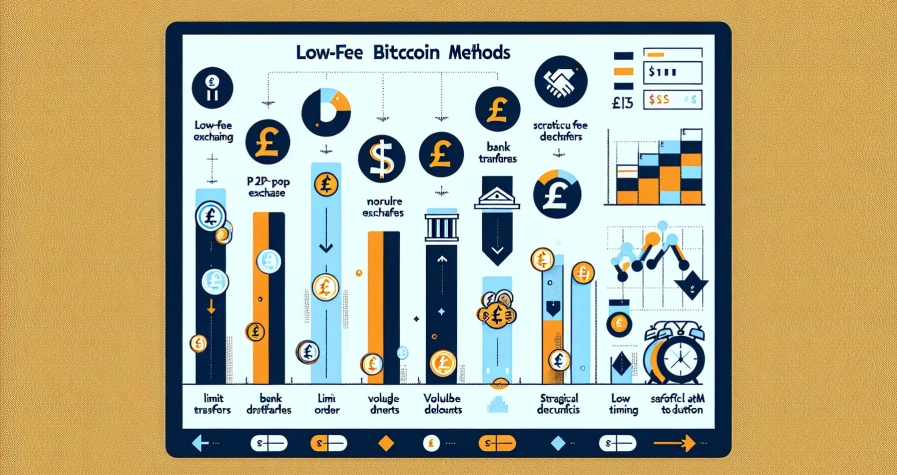Key Takeaways
- Bitcoin dominance measures Bitcoin’s market share within the total cryptocurrency market cap, serving as a critical indicator for market sentiment – when dominance falls below 40-50%, it typically signals the onset of altseason where alternative cryptocurrencies begin outperforming Bitcoin significantly.
- Altseason occurs when altcoins collectively outperform Bitcoin for sustained periods of 3+ months, characterised by substantial price surges, increased trading volumes (200-500% above normal), and heightened market volatility with daily movements often exceeding 10-20% for individual tokens.
- Bitcoin dominance and altseason maintain an inverse relationship – as Bitcoin dominance declines from peaks above 60%, capital rotates from Bitcoin into altcoins, creating predictable market cycles that savvy traders can use to time their investment strategies effectively.
- Multiple factors drive altseason emergence including market sentiment shifts towards risk-seeking behaviour, institutional investment in promising altcoin sectors, positive narratives around blockchain innovations (DeFi, NFTs, AI), and regulatory clarity that reduces uncertainty in alternative cryptocurrency markets.
- Successful altseason trading requires strategic diversification across 8-12 carefully researched altcoins spanning different market cap tiers and blockchain themes, combined with disciplined risk management including stop-loss orders at 15-25% and incremental profit-taking at predetermined levels.
- Technical indicators provide early altseason detection through monitoring Bitcoin dominance thresholds, the Altcoin Season Index above 75%, market cap ratios between Bitcoin and altcoins, and sentiment metrics that collectively signal optimal entry and exit points for altcoin positions.
You’ve probably heard seasoned crypto traders throwing around terms like “altseason” and “Bitcoin dominance” with the confidence of weather forecasters. These concepts aren’t just crypto jargon – they’re fundamental market indicators that can dramatically influence your investment strategy and portfolio performance.
Bitcoin dominance measures Bitcoin’s market cap as a percentage of the entire cryptocurrency market. When this percentage drops significantly whilst alternative cryptocurrencies (altcoins) surge in value you’re witnessing what the crypto community calls “altseason”. It’s a cyclical phenomenon that has shaped major bull runs throughout crypto history.
Understanding these market dynamics gives you a crucial edge in timing your trades and diversifying your holdings effectively. Whether you’re a seasoned investor or just starting your crypto journey mastering these concepts will help you navigate the volatile waters of digital asset markets with greater confidence and strategic insight.
Understanding Bitcoin Dominance
Bitcoin dominance represents the market cap percentage that Bitcoin holds compared to the entire cryptocurrency market. This metric serves as a fundamental indicator for understanding market sentiment and altcoin performance cycles.
What Bitcoin Dominance Measures
Bitcoin dominance measures Bitcoin’s market capitalisation relative to the total cryptocurrency market capitalisation. You can interpret this percentage as Bitcoin’s market share within the broader crypto ecosystem, indicating whether institutional and retail investors favour Bitcoin over alternative cryptocurrencies.
Market sentiment shifts become apparent through dominance fluctuations. High dominance percentages above 50% typically signal investor preference for Bitcoin’s perceived stability and established market position. Low dominance percentages below 40% often indicate increased investor appetite for altcoins such as Ethereum, Cardano, and Solana.
Trading volume patterns correlate with dominance changes, providing insights into capital rotation between Bitcoin and altcoins. Rising dominance suggests money flowing from altcoins into Bitcoin, whilst falling dominance indicates capital moving from Bitcoin into alternative cryptocurrency projects.
How Bitcoin Dominance Is Calculated
Bitcoin dominance calculation uses a straightforward formula: Bitcoin’s market cap divided by total cryptocurrency market cap, multiplied by 100. You determine Bitcoin’s market cap by multiplying its current price by the circulating supply of approximately 19.8 million coins.
Market data providers like CoinMarketCap and CoinGecko aggregate cryptocurrency market caps to establish the total market capitalisation. These platforms exclude certain tokens, stablecoins, or projects without reliable trading data from their calculations, creating slight variations between different data sources.
Real-time updates occur continuously as cryptocurrency prices fluctuate throughout trading sessions. You’ll observe dominance percentages changing multiple times per day, reflecting the dynamic nature of cryptocurrency markets and varying investor preferences.
Historical Bitcoin Dominance Trends
Bitcoin dominance reached its highest levels during 2017, maintaining percentages above 85% before the altcoin boom. The dominance dropped to approximately 32% during the peak altseason of January 2018, when altcoins experienced unprecedented growth rates.
| Year | Peak Dominance | Low Dominance | Notable Events |
|---|---|---|---|
| 2017 | 87% | 32% | Initial altcoin boom |
| 2020 | 72% | 58% | DeFi summer emergence |
| 2021 | 73% | 39% | Altseason revival |
| 2023 | 55% | 44% | Market consolidation |
Market cycles demonstrate recurring patterns where Bitcoin dominance declines during bull markets as altcoins outperform. You’ll notice dominance typically increases during bear markets when investors seek Bitcoin’s relative stability compared to more volatile altcoins.
Institutional adoption has influenced dominance trends since 2020, with companies like Tesla and MicroStrategy adding Bitcoin to their balance sheets. These developments created sustained periods of higher dominance compared to previous market cycles, establishing new baseline levels around 45-50%.
What Is Altseason?
Altseason represents a distinct market phase when alternative cryptocurrencies outperform Bitcoin through significant price surges and capital rotation. This period marks a fundamental shift in investor behaviour from Bitcoin-focused portfolios towards higher-risk altcoin opportunities.
Defining Altseason in Cryptocurrency Markets
Altseason occurs when altcoins collectively generate returns that substantially exceed Bitcoin’s performance over sustained periods, typically lasting three months or longer. You’ll recognise this phase when Bitcoin dominance falls below 40% whilst multiple top-ranked altcoins simultaneously experience substantial price appreciation.
The phenomenon emerges during specific market cycle stages when Bitcoin’s price consolidates after major rallies. You observe increased investor appetite for alternative digital assets as market participants seek enhanced returns beyond Bitcoin’s established performance patterns.
Trading professionals identify altseason through quantitative metrics including dominance ratios and relative performance indicators. You can track these measurements using market capitalisation data that compares Bitcoin’s market share against the broader cryptocurrency ecosystem.
Key Characteristics of Altseason
Capital rotation patterns define altseason’s primary mechanism as investors move funds from Bitcoin into diverse altcoin positions. You witness this transition through declining Bitcoin dominance percentages alongside rising altcoin trading volumes across major exchanges.
Price volatility increases significantly during altseason periods with daily percentage movements often exceeding 10-20% for individual altcoins. You encounter heightened market activity as retail and institutional traders pursue opportunities in projects like Ethereum, Solana and Cardano.
Market sentiment shifts towards risk-seeking behaviour characterise altseason dynamics. You observe investor confidence growing as successful altcoin trades generate substantial returns, creating momentum that drives further capital allocation into alternative cryptocurrencies.
Trading volume expansion occurs across multiple altcoin pairs during these periods. You track volume increases ranging from 200-500% compared to typical market conditions, indicating widespread participation in altcoin markets beyond Bitcoin-focused strategies.
The Relationship Between Bitcoin Dominance and Altseason
Bitcoin dominance and altseason maintain an inverse relationship that creates predictable patterns in cryptocurrency markets. Understanding this correlation enables you to anticipate market shifts and position your portfolio accordingly.
How Bitcoin Dominance Signals Altseason
Bitcoin dominance serves as your primary indicator for detecting incoming altseason periods through specific threshold patterns. When dominance drops below 50%, you’re witnessing the initial signs of capital rotation from Bitcoin into alternative cryptocurrencies.
Key Dominance Thresholds:
| Dominance Level | Market Phase | Investor Sentiment |
|---|---|---|
| Above 60% | Bitcoin-led rally | Risk-averse preference |
| 50-60% | Transition phase | Moderate risk appetite |
| 40-50% | Early altseason | Growing altcoin interest |
| Below 40% | Peak altseason | Maximum risk appetite |
The dominance decline signals your entry point into altseason territory. Historical data shows that drops to the 50-60% range often precede significant altcoin rallies, though specific thresholds vary by market cycle.
You’ll observe this pattern when Bitcoin prices plateau after major rallies. Investors then seek higher returns through altcoins, causing dominance to fall whilst altcoin prices surge. This rotation typically accelerates once dominance breaks below critical support levels.
Market Cycles and Dominance Shifts
Market cycles follow predictable dominance patterns that you can track to time your trading strategies. These cycles begin with Bitcoin-led rallies that increase dominance, followed by consolidation phases that trigger altcoin rotations.
Typical Cycle Progression:
- Phase 1: Bitcoin rallies strongly whilst dominance rises above 55%
- Phase 2: Bitcoin price stabilises whilst dominance peaks
- Phase 3: Capital rotates into altcoins as dominance declines
- Phase 4: Altseason emerges with dominance falling below 45%
You’ll notice that these shifts occur when Bitcoin momentum weakens after sustained price increases. Traders then diversify into altcoins seeking amplified returns, creating the inverse relationship between dominance and altcoin performance.
Market sentiment drives these dominance shifts through distinct investor behaviour patterns. During high dominance periods, you’re seeing preference for Bitcoin’s perceived stability. Conversely, falling dominance indicates your market’s growing appetite for higher-risk altcoin opportunities.
The timing between dominance peaks and altseason onset varies across cycles, typically ranging from 2-8 weeks. Monitoring dominance trends alongside Bitcoin price action provides you with the most accurate signals for anticipating these market phase transitions.
Identifying Altseason Patterns
Altseason patterns emerge through predictable market cycles that you can track using specific technical indicators and historical precedents. Understanding these patterns enables you to anticipate market rotations and position your portfolio accordingly.
Technical Indicators to Watch
You can identify emerging altseason conditions by monitoring several key technical indicators that signal capital rotation from Bitcoin to alternative cryptocurrencies.
Bitcoin Dominance Levels serve as your primary altseason detector. Dominance declining below 60% indicates altseason approaching, whilst levels dropping under 40% signal peak altcoin outperformance. Current dominance near 70% suggests Bitcoin maintains market leadership without strong altseason signals present.
Altcoin Season Index measures the percentage of top 50 altcoins outperforming Bitcoin over 90-day periods. Values above 75% confirm active altseason conditions, providing quantitative validation for your market timing decisions.
Market Cap Ratios between total altcoin capitalisation and Bitcoin’s market cap reveal capital flow dynamics. Rising ratios indicate increasing altcoin strength relative to Bitcoin, particularly when sustained over multiple weeks.
Top 10 Altcoin Performance offers concentrated insight into institutional-grade altcoin adoption. When 70% or more consistently outperform Bitcoin across 30-day periods, broader altseason momentum typically follows.
Sentiment Indicators including Fear and Greed Index readings above 70, alongside DeFi total value locked growth exceeding 20% monthly, support altseason confirmation signals.
Historical Altseason Examples
Historical altseason periods demonstrate consistent patterns linked to Bitcoin dominance cycles and technological innovation waves within cryptocurrency markets.
2017-2018 Altseason represented the most dramatic altcoin outperformance period, with Bitcoin dominance falling from 87% to 32% between December 2017 and January 2018. Ethereum gained 1,300% during this 60-day window, whilst smaller altcoins like Ripple and Cardano achieved gains exceeding 2,000%.
2020-2021 DeFi Summer marked altseason emergence through decentralised finance protocol adoption. Bitcoin dominance declined from 70% to 40% as DeFi tokens including Uniswap, Aave, and Compound delivered returns between 500-1,500% across six-month periods.
2021 NFT and Layer-1 Altseason saw Solana, Avalanche, and Polygon outperform Bitcoin by 300-800% whilst dominance dropped to 41%. This altseason coincided with NFT marketplace volume exceeding $2 billion monthly and Layer-1 adoption metrics reaching new highs.
Current Market Conditions show Bitcoin dominance maintaining 70% levels with altcoin indices below typical altseason thresholds. These metrics indicate continued Bitcoin market leadership without immediate altseason catalysts present, though monitoring remains essential for detecting emerging rotation patterns.
Factors That Drive Altseason
Altseason emerges from specific market catalysts that shift investor focus from Bitcoin to alternative cryptocurrencies. Understanding these driving forces enables you to recognise potential altseason periods and position your portfolio accordingly.
Market Sentiment and Investor Behaviour
Market sentiment shifts when investors perceive greater opportunities in altcoins compared to Bitcoin. You’ll observe altseason beginning when Bitcoin’s price consolidates or experiences slower growth periods, prompting capital rotation into higher-potential alternatives.
Positive narratives around altcoin innovations trigger significant sentiment changes. These narratives include smart contract developments, DeFi protocol launches, NFT marketplace expansions, and AI-related token releases. Each innovation creates investment themes that attract capital away from Bitcoin’s established position.
Risk appetite transitions drive the fundamental behaviour changes during altseason. When you transition from risk-averse to risk-seeking investment strategies, capital flows naturally migrate from Bitcoin’s relative stability into altcoins promising higher returns. This behavioural shift typically occurs when market confidence reaches elevated levels and investors seek amplified gains through alternative cryptocurrency exposure.
Institutional Investment Impact
Institutional investment provides crucial liquidity and legitimacy to altcoin markets during seasonal rotations. When institutions allocate capital to promising altcoins, you benefit from improved trading conditions and reduced price slippage across alternative cryptocurrency markets.
Sector-specific institutional support accelerates altseason momentum through targeted investments. Institutions focus on altcoins with strong use cases, technical advancements, or innovative blockchain applications. This institutional validation creates cascading effects as retail investors follow institutional capital allocation patterns.
Capital inflow improvements occur when institutional participation reduces market friction and enhances trading efficiency. You’ll notice increased trading volumes and tighter bid-ask spreads when institutions enter altcoin markets, making alternative cryptocurrencies more attractive investment vehicles compared to periods without institutional support.
Regulatory Changes and Market Events
Regulatory clarity serves as a powerful altseason catalyst when governments provide clearer cryptocurrency frameworks. You benefit from increased investor confidence when regulatory uncertainty diminishes, particularly for altcoins previously considered high-risk due to unclear legal status.
Market events including partnerships, technological upgrades, and endorsements create immediate price impacts across altcoin sectors. Major blockchain upgrades, cross-chain integration announcements, or corporate adoption news generate positive momentum that extends beyond individual tokens to entire altcoin categories.
Regulatory pressure on Bitcoin can paradoxically accelerate altseason by redirecting investor attention toward altcoins perceived as less regulatory risk or more innovative solutions. When Bitcoin faces regulatory challenges, you’ll observe capital migration patterns toward altcoins positioned as technological improvements or regulatory-compliant alternatives to traditional cryptocurrency approaches.
Trading Strategies During Altseason
Altseason presents unique trading opportunities that require strategic approaches to capitalise on heightened volatility and capital rotation patterns. You’ll need disciplined execution and focused selection criteria to navigate this dynamic market phase effectively.
Portfolio Diversification Approaches
Theme-based diversification maximises your altseason exposure whilst reducing project-specific risks. Focus your selections on sectors with strong narratives like DeFi protocols (Uniswap, Aave), AI-related tokens (Render, Fetch.ai), or metaverse projects (Sandbox, Decentraland) rather than random altcoin picks.
Strategic Bitcoin-altcoin balance optimises your portfolio for altseason conditions. Maintain 30-40% Bitcoin exposure during peak altseason periods to preserve stability whilst allocating 60-70% to promising altcoins across 3-5 different themes.
Limited asset concentration prevents over-diversification problems that dilute your research efforts. Select 8-12 carefully researched altcoins maximum to ensure thorough monitoring and timely decision-making during rapid price movements.
Market cap tier allocation spreads risk across different altcoin categories. Allocate 40% to large-cap altcoins (Ethereum, BNB), 35% to mid-cap alternatives (Polygon, Chainlink), and 25% to small-cap opportunities with higher growth potential but increased volatility.
Risk Management Considerations
Volatility assessment remains crucial during altseason periods when daily price swings exceed 10-20% for individual altcoins. Set stop-loss orders at 15-25% below your entry points to limit downside exposure whilst allowing room for normal market fluctuations.
Liquidity evaluation prevents trading difficulties with smaller altcoins that suffer from thin order books. Prioritise altcoins with daily trading volumes above $10 million to ensure smooth entry and exit execution at desired price levels.
Technical indicator monitoring provides early warning signals for market phase transitions. Track Bitcoin dominance levels below 40%, the Altcoin Season Index above 75, and increased social media sentiment metrics to gauge altseason strength and potential reversals.
Profit-taking strategies protect your gains during altseason peaks when corrections become inevitable. Take profits incrementally at 50%, 100%, and 200% gains rather than holding positions through complete market cycles.
Regulatory risk awareness acknowledges sudden policy changes that disproportionately impact altcoins compared to Bitcoin. Monitor regulatory developments in major jurisdictions and reduce exposure to tokens facing potential classification issues or compliance challenges.
Conclusion
Understanding altseason and Bitcoin dominance gives you powerful tools for navigating crypto markets more effectively. These indicators help you identify market cycles and position yourself strategically before major trends develop.
Bitcoin dominance serves as your roadmap for timing entry and exit points whilst altseason patterns reveal optimal opportunities for portfolio diversification. You’ll find these metrics particularly valuable when combined with technical analysis and market sentiment indicators.
Successful crypto investing isn’t about predicting exact market movements but rather recognising patterns and preparing for different scenarios. By monitoring dominance levels and altseason indicators you’re better equipped to make informed decisions that align with current market conditions.
Remember that crypto markets remain inherently volatile and unpredictable. Use these tools as part of a broader strategy that includes proper risk management and never invest more than you can afford to lose.
Frequently Asked Questions
What is Bitcoin dominance and how is it calculated?
Bitcoin dominance represents Bitcoin’s market capitalisation as a percentage of the total cryptocurrency market cap. It’s calculated by dividing Bitcoin’s market cap by the combined market cap of all cryptocurrencies. This metric serves as a fundamental indicator for market sentiment and helps predict altcoin performance cycles.
What does altseason mean in cryptocurrency trading?
Altseason is a distinct market phase when alternative cryptocurrencies significantly outperform Bitcoin, typically lasting three months or longer. It’s characterised by Bitcoin dominance falling below 40%, increased altcoin trading volumes, and daily price movements often exceeding 10-20% for individual altcoins.
How does Bitcoin dominance relate to altseason?
There’s an inverse relationship between Bitcoin dominance and altseason. When dominance drops below 40%, it indicates peak altseason with maximum risk appetite. Conversely, dominance above 60% suggests a Bitcoin-led rally, while levels around 45-50% represent typical consolidation phases.
What are the key indicators of an approaching altseason?
Key indicators include Bitcoin dominance falling below 40%, the Altcoin Season Index showing positive trends, increased market cap ratios favouring altcoins, strong performance from top 10 altcoins, and positive sentiment indicators. These metrics help identify capital rotation patterns from Bitcoin to altcoins.
What factors typically drive altseason periods?
Altseason is driven by Bitcoin price consolidation, positive altcoin narratives (like DeFi innovations), institutional investment providing liquidity, regulatory clarity enhancing confidence, significant market events such as partnerships, and technological upgrades. These factors combine to shift investor focus towards higher-risk altcoin opportunities.
What trading strategies work best during altseason?
Effective altseason strategies include theme-based diversification to reduce project-specific risks, maintaining strategic balance between Bitcoin and altcoins, implementing strict risk management with volatility assessment, monitoring technical indicators for market transitions, and having clear profit-taking strategies to protect gains during peaks.








